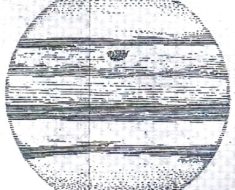A sequence of letters belonging to an ancient alphabet has been discovered in a most unusual way — by someone scrolling through social media.
The inscription, on a slate slab unearthed in Spain, is closely linked to the Phoenician alphabet, which was hugely influential on later writing systems including Latin, Spanish and English. Researchers hope that the finding will expand their understanding of a prosperous pre-Roman civilization’s writing system. Until now, only incomplete or poorly dated samples had been found. The Spanish National Research Council announced the discovery in a June 11 press release.
Earlier this month, Joan Ferrer i Jané, a software engineer based in Barcelona, was browsing updates on X, formerly Twitter, from an archaeological dig at Casas del Turuñuelo in southern Spain. Dating to the 5th century B.C., the site is one of several connected with Tartessos. This civilization emerged in what is today southwestern Spain from the cultural exchange between the Iberian peninsula’s indigenous dwellers and Phoenician settlers who arrived around the 10th century B.C. (SN: 3/16/22). Ancient Greek texts mention the existence of a city called Tartessos, which recent findings are revealing was in fact a complex culture with stunning material wealth due to abundant iron, silver and gold in the region. This civilization mysteriously disappeared towards the end of the 5th century B.C.
El Turuñuelo, first excavated in 2015, features a large temple that experts suggest was deliberately burned down and buried as part of a ceremonial ritual. The clay used for burial, archaeologists say, sealed the site, preserving its contents.

Researcher Joan Ferrer i Jané spotted a Paleohispanic letter in this photo of the slab, which focused on warrior figures.E. Rodríguez/M. Luque/CSIC
During this year’s excavations, archaeologists found a square slate rock engraved with warriors as well as geometric shapes, faces and other markings. It appears to have been a sketching device for an artisan or apprentice, says excavation codirector Esther Rodríguez González of the Archaeological Institute of Mérida in Spain.
A June 6 press release and social media posts from the research team highlighted the warriors’ silhouettes. But Ferrer, who is also a part-time researcher in ancient languages at the University of Barcelona, noticed something more.
“As soon as I saw the slate, my eye went immediately to one symbol,” Ferrer says. It was the Paleohispanic version of the capital letter “i”, which he says can’t be mistaken for anything else. He wrote to the archaeologists, who sent him high-resolution images. Ferrer identified 15 symbols and hints of more letters that will require special imaging techniques to be identified. The bottom part of the tablet, potentially containing additional characters, is missing. Ferrer thinks that the slate might have had as many as 32 symbols.
“That’s what an educated sight can allow,” Rodríguez González says, praising Ferrer’s ability to spot the symbols her team had missed, especially since they were upside down in pictures posted online. Ferrer has been invited to collaborate on the study of the symbols.
In the area thought to have once been part of Tartessos, only two alphabet inscriptions have been found: one with 27 symbols but poorly dated, and the other with only a few symbols preserved.
This new, well-dated example provides a clearer picture of the Tartessian writing system and confirms literacy among El Turuñuelo’s inhabitants in the 5th century B.C., says José Ángel Zamora López, an expert in the origin of alphabetic writing at the Institute of Mediterranean and Near Eastern Languages and Cultures in Madrid.

Studying the symbols’ layout will be particularly useful for tracing language and cultural evolution within Tartessos, Zamora López says. Researchers are unsure if the same writing system was used throughout the territory of Tartessos or if there were regional variations. Like the other two examples, this alphabet descends from the Phoenician 22-letter alphabet, but has unique variations that can reveal how it evolved from previous versions. Because different sounds and new symbols were typically placed toward the end of the alphabet inscription, or abecedary, the missing piece of the slate slab may be especially interesting. “If you add that we don’t have that many in this area, a third abecedary allows us to calibrate the other two,” Zamora López says.
The archaeologists at El Turuñuelo, assisted by Ferrer, are planning to reexamine all the slate fragments collected during the excavation in hopes of finding more inscriptions, or maybe even the lost fragment of the alphabet. The finding “gives us the expectation of finding more inscriptions,” Ferrer says. “I’m convinced that it will happen.”
#lost #civilizations #partial #alphabet #discovered #social #media #post
Image Source : www.sciencenews.org






